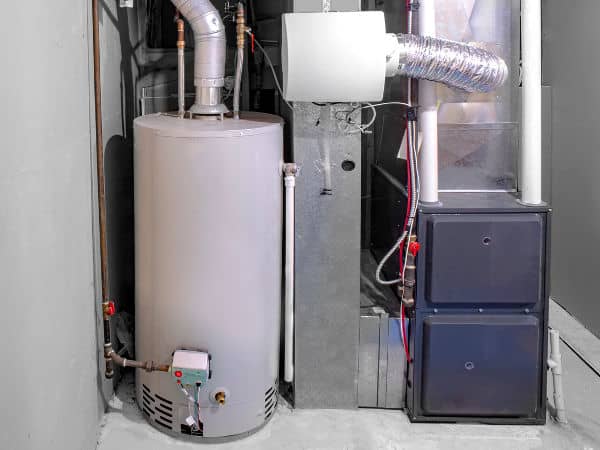This post following next in relation to How to Maintain Your Water Heater & Prolong its Life is really insightful. Give it a go and make your own personal results.

Hot water is crucial for day-to-day comfort, whether it's for a refreshing shower or cleaning meals. To guarantee your hot water system runs effectively and lasts much longer, regular maintenance is crucial. This article provides functional pointers and understandings on exactly how to preserve your home's warm water system to avoid interruptions and pricey fixings.
Intro
Keeping your home's hot water system may appear challenging, however with a couple of simple steps, you can guarantee it runs smoothly for many years to find. This overview covers everything from comprehending your warm water system to do it yourself upkeep tips and understanding when to employ specialist aid.
Relevance of Maintaining Your Hot Water System
Routine upkeep not just expands the lifespan of your hot water system however likewise guarantees it runs successfully. Disregarding maintenance can cause lowered performance, greater energy bills, and even premature failure of the system.
Indications Your Hot Water System Needs Maintenance
Understanding when your hot water system needs interest can stop significant problems. Watch out for indications such as inconsistent water temperature, weird sounds from the heating unit, or rusty water.
Understanding Your Hot Water System
Prior to diving right into upkeep tasks, it's valuable to comprehend the fundamental elements of your hot water system. Typically, this consists of the water heater itself, pipes, anode rods, and temperature level controls.
Month-to-month Upkeep Tasks
Normal regular monthly checks can aid capture minor issues before they rise.
Flushing the Water Heater
Flushing your hot water heater eliminates sediment accumulation, enhancing efficiency and prolonging its life.
Monitoring and Changing Anode Rods
Anode rods prevent deterioration inside the tank. Inspecting and changing them when worn is essential.
Inspecting and Changing Temperature Setups
Adjusting the temperature level setups ensures optimum efficiency and security.
DIY Tips for Maintenance
You can perform a number of maintenance jobs on your own to keep your warm water system in leading condition.
Checking for Leaks
Consistently inspect pipelines and connections for leakages, as these can result in water damage and greater bills.
Testing Stress Relief Valves
Testing the stress relief valve guarantees it functions appropriately and stops too much pressure accumulation.
Protecting Pipes
Shielding hot water pipelines minimizes heat loss and can conserve energy.
When to Call a Specialist
While DIY upkeep is advantageous, some concerns need specialist competence.
Complex Problems Calling For Professional Assistance
Instances include major leakages, electrical issues, or if your water heater is constantly underperforming.
Regular Professional Upkeep Advantages
Specialist maintenance can consist of thorough assessments, tune-ups, and ensuring conformity with security criteria.
Conclusion
Normal maintenance of your home's warm water system is necessary for efficiency, durability, and price financial savings. By following these suggestions and understanding when to look for specialist aid, you can ensure a reputable supply of hot water without unforeseen interruptions.
How to Maintain an Instant Hot Water Heater
Before tinkering with your hot water heater, make sure that it’s not powered on. You also have to turn off the main circuit breaker and shut off the main gas line to prevent accidents. Also turn off the water valves connected to your unit to prevent water from flowing into and out of the appliance. 2. When you’re done, you have to detach the purge valves’ caps. These look like the letter “T” and are situated on either side of the water valves. Doing so will release any pressure that has accumulated inside the valves while at the same time avoid hot water from shooting out and burning your skin. 3. When the purge valves’ caps are removed, you have to connect your hosing lines to the valves. Your unit should have come with three hoses but if it didn’t, you can purchase these things from any hardware or home repair shops. You can also get them from retail stores that sell water heating systems. Read the user’s manual and follow it to complete this task properly. When the hosing lines are connected, open the purge port’s valves. 4. You should never use harsh chemical cleaners or solutions when cleaning your unit. Make use of white vinegar instead. It should be undiluted and you’ll probably use about 2 gallons. 5. Now flush your water heater. This task should probably take about 40 minutes. We can’t give you specific directions for this because the procedure is carried out depending on the type, model and brand of your heater. With that being said, refer to the user’s manual. 6. When you’re done draining the unit, you have to turn off the purge port valves again. Remove the hosing lines that you earlier installed on each of the water valves. Put the valve caps (purge port) back in their respective places and be very careful so as not to damage the rubber discs that are found inside these caps. 7. Now that everything’s back in place, check your user’s manual again to find out how to reactivate your water heating system. 8. Once it is working, turn one of your hot water faucets on just to let air pass through the heater’s water supply pipes. Leave the tap on until water flows smoothly out of it. https://www.orrplumbing.com/blog/2014/september/how-to-maintain-an-instant-hot-water-heater/

I stumbled upon that piece on How to Maintain a Hot Water Heater in a Few Simple Steps when doing a search on the web. Loved our write up? Please share it. Help other people find it. We truly appreciate reading our article about What Kind of Maintenance Do Water Heaters Need?.
Estimate